I didn’t fully appreciate asparagus until I grew it myself—and realized how low-maintenance it actually is once it’s established. The idea of planting something once and harvesting it every spring for 15 to 20 years sounded almost too good to be true. But asparagus really does deliver, if you’re willing to be patient upfront.
The first year or two is mostly about setting the stage. It’s not the fastest payoff, but once those crowns settle in, you’ll have fresh, tender spears popping up year after year with barely any effort. I’ll walk you through what I did to get mine going strong, from choosing the right spot to keeping the bed healthy over time.
Choosing the Right Variety

Selecting the perfect asparagus variety is like choosing a lifelong companion for your garden. Opt for types like Jersey Giant or Purple Passion, known for their robust yield and disease resistance. Each variety offers unique flavors, so consider your culinary preferences.
Consider the region’s climate and soil conditions. Varieties like Mary Washington thrive in cooler climates, offering a rich, earthy taste. Research local recommendations to ensure compatibility with your environment.
With the right choice, your asparagus patch becomes a reliable source of nourishment, delighting your taste buds year after year.
Preparing the Soil
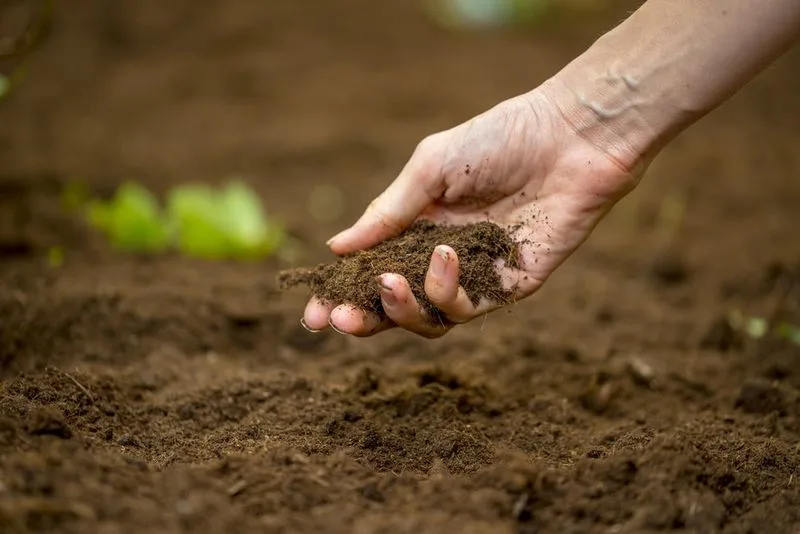
Rich, well-drained soil is the foundation of a thriving asparagus bed. Start by removing weeds and debris, then incorporate organic matter like compost to enhance fertility.
Test the soil pH, aiming for a slightly acidic to neutral level around 6.5 to 7. Limestone can be added to adjust pH if needed. This meticulous preparation ensures asparagus crowns establish strong roots.
Proper drainage is crucial, so consider raised beds if your garden retains water. By investing in soil quality, you set the stage for healthy asparagus growth, promising decades of rewarding harvests.
Planting Asparagus Crowns
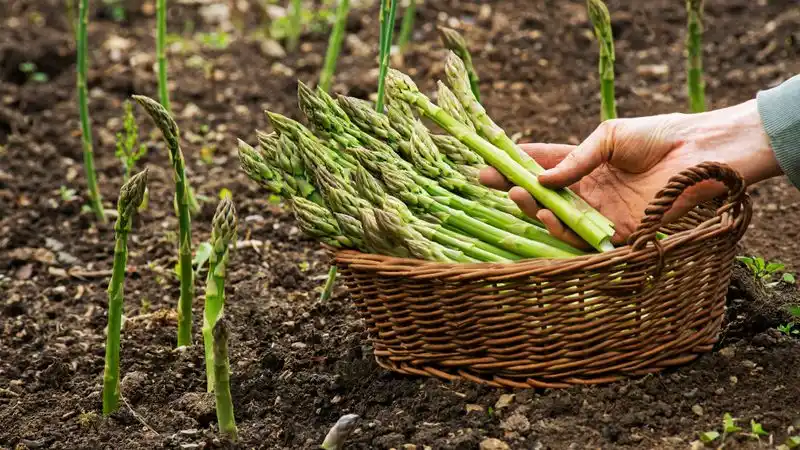
When planting asparagus crowns, timing is everything. Early spring is the ideal season to lay the groundwork for future harvests. Dig trenches approximately 12 inches deep and 18 inches apart.
Place each crown 6 inches apart, fanned out like delicate fingers. Cover with soil, allowing the tips to peek through. Patience is key here—resist harvesting in the first year to allow the crowns to establish.
With care and consideration, your asparagus will mature, providing robust spears in subsequent seasons. The anticipation of those first tender stalks is a gardener’s delight.
Watering and Fertilizing
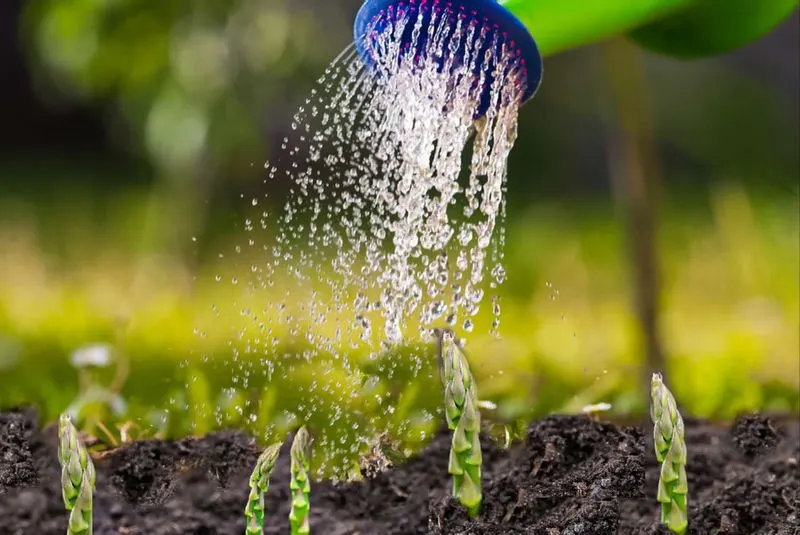
Nurturing asparagus requires consistent watering, especially in dry spells. Deep watering promotes root growth, essential for long-term vigor. Ensure the soil remains moist but not waterlogged, balancing nature’s needs.
Fertilizing is equally vital. Apply a balanced fertilizer in early spring as new shoots emerge, followed by a second application post-harvest. This nourishment supports energy reserves for the coming year.
A well-watered and fed asparagus bed becomes a verdant oasis, ensuring your green spears stand tall and proud, ready to grace your table season after season.
Weed Management

A weed-free asparagus bed is a haven for healthy growth. Regularly inspect for unwelcome invaders that compete for nutrients and space. Hand-weeding is the safest method, protecting delicate roots from disturbance.
Mulching with straw or wood chips provides a natural barrier against weeds, maintaining soil moisture and temperature. This protective layer reduces labor and enhances plant health.
Consistent attention to weed management ensures your asparagus thrives without competition. This vigilance pays off, rewarding you with a flourishing bed that produces abundant, tender spears year after year.
Dealing with Pests and Diseases
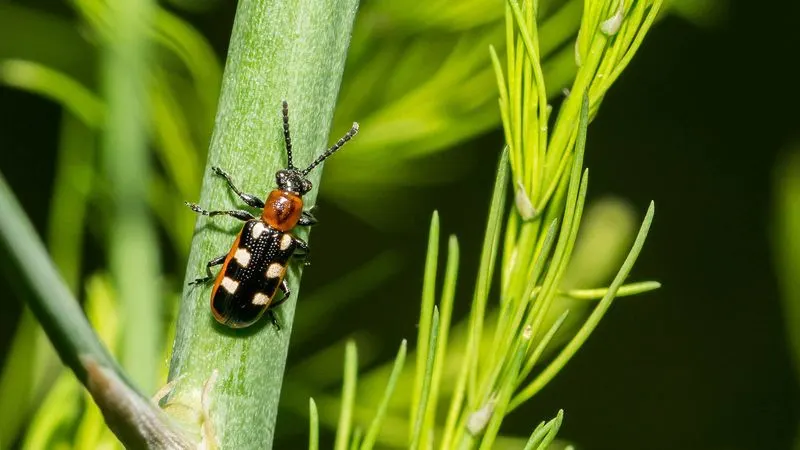
Asparagus has its share of adversaries, including asparagus beetles and rust. Vigilance is essential in identifying and addressing these threats. Inspect plants regularly, removing beetles by hand or using insecticidal soap.
Diseases like rust can be managed by ensuring good air circulation and avoiding overhead watering. Fungicides may also be used if necessary.
A proactive approach to pest and disease management ensures your asparagus bed remains robust and productive. By safeguarding your plants, you secure a bountiful future, enjoying the fruits of your labor for decades.
Harvesting and Maintaining
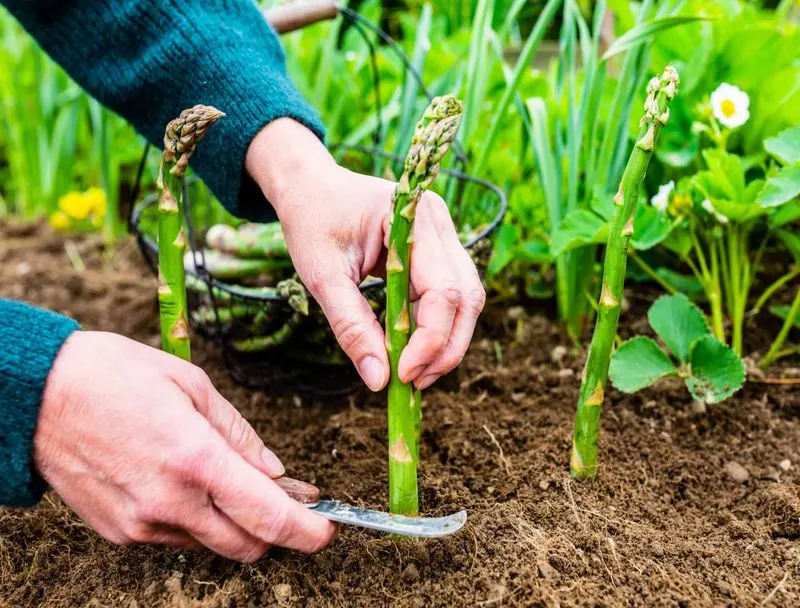
Harvesting asparagus is a moment of triumph. Begin when spears reach 6-8 inches, using a sharp knife to cut at ground level. Limit harvesting to a few weeks initially, extending in subsequent years as plants mature.
Post-harvest, allow ferns to grow, fueling the roots for the next season. Cut back brown foliage in late autumn to prepare for winter.
By respecting the plant’s lifecycle, you create a sustainable harvest plan. This careful stewardship translates to decades of delicious asparagus, gracing your meals and embodying the gardener’s art of patience and reward.

